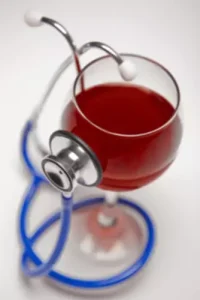Sobriety Tattoo Ideas to Celebrate Your Recovery

While the interpretation is subjective, it often serves as a small sobriety tattoo etched in the traditional black ink. It serves to remind the recovering addict to seek balance and exhibit perseverance as he moves in the right direction toward a new life. The Yang or Taijitu symbol primarily represents the concept of balance between opposing forces. While it is not inherently recognized as a recovery-related tattoo, its symbolism of balance and harmony could Sobriety be interpreted within the context of sobriety. Semicolon tattoos carry a unique message of resilience and hope in the face of mental illness and addiction.
Top Sobriety Tattoos for a Recovering Alcoholic

Tattoos acquired during the recovery process often embody the transformative experiences of the individual. They can represent the shedding of a previous life dominated by substance use disorders and the emergence of a new, healthier self. Each design serves as a visual narrative of the wearer’s resilience and their journey towards healing https://ecosoberhouse.com/ and recovery. This art form becomes a way to heal scars of the past, covering marks of previous struggles with symbols of strength and renewal. As individuals progress in their sobriety, these designs serve as daily reminders of where they have been and the brighter path they now walk. One of the most personalized and significant tattoo ideas is the inclusion of one’s sobriety date.
Sobriety and Recovery Tattoo: Navigating Life’s Storm with Symbolic Ship
Recovery journey tattoos serve as a deeply personal narrative, uniquely portraying milestones, struggles, and victories on the path to sobriety. The concept of storytelling through recovery journey tattoos allows individuals to encapsulate their experiences in rich, symbolic artwork that speaks volumes. For many, this includes sobriety tattoos incorporating specific elements that signify pivotal moments of change, realization, or support that have marked their recovery journey.

Butterfly Sobriety Tattoos
When getting any tattoo, it is important to properly research and develop a plan for how, where, and why you are getting it. This is especially true in the case of sobriety tattoos, as these often represent the most important bits and pieces of your recovery journey. Similar to marking the exact date and time a person first became substance-free, these recovery tattoos can serve as an interactive way in which one can continue to take account of their sobriety. For many individuals who have or are actively overcoming addiction, this recovery process can be extremely difficult.

As anyone who is trying to be booze-free or drug-free knows, it isn’t an easy task. Of course, you have the freedom to get as creative with your sobriety tattoos as you want! This means that you can add color, detail, and a lot more to bring your AA sobriety tattoo to life.
Sobriety Tattoos: Explore Recovery Symbols with SOBRLIFE
Reflecting on the trip and the growth experienced since getting the tattoo is one way to keep its significance fresh and relevant. Once you have selected an artist, the next step is to discuss the meaning behind your tattoo. This conversation is more than a simple consultation; it’s an opportunity to connect with the person who will be marking a pivotal moment of your life on your skin. Be open about your journey to sobriety, the significance of the symbols you’ve chosen, and why you’ve decided to commemorate your recovery with a tattoo. This dialogue can inspire your artist, giving them a deeper understanding of your story, which can be reflected in the intricacy and care of the tattoo design. Many find this process therapeutic, as it allows for an expressive outlet and acknowledgment of their personal growth and resilience.
- Those in recovery may use short words or simple phrases to convey their thoughts and remind themselves to remain clean and sober.
- Creating a personal symbol of resilience through a tattoo allows those in recovery to encapsulate their unique experiences in a meaningful emblem.
- As a sobriety symbol, the lotus flower embodies transformation, resilience, and inner growth.
- You may also look for resilient tattoos if you wish to acknowledge your endurance journey.
- Just as in grammar, it offers a chance to extend a sentence, or in this case, your story.
- Its simple design speaks volumes about starting fresh, making it a powerful choice for recovery tattoos.
- They are a badge of honor for those moving from their old ways to the sober lifestyle.
- Or, your sobriety tattoo can be based on your sober journey or your current sober lifestyle.
- Research artists’ portfolios to see if their style aligns with your vision, and read reviews to gauge how they interact with their clients.
- Reflecting on the trip and the growth experienced since getting the tattoo is one way to keep its significance fresh and relevant.
- Sobriety tattoos provide a permanent reminder to stay committed to sobriety.
From a bottle shattered, symbolizing a break from addiction, to the very word “sobriety” written in bold, powerful strokes, they are a testament to the transformation from addiction to sobriety. And hey, while the traditional black ink has its charm, don’t be afraid to add a dash of color to make it truly your own. Throughout my tattooing career, I’ve inked many of these recovery tattoos. Each session is more than just work; it’s a profound experience, a testament to the unyielding human spirit.

